#Nuncius
Text
STUDI / Fu Raimondo di Sangro il primo a sintetizzare il “blu oltremare”: la scoperta dell'Università di Bari
STUDI / Fu Raimondo di Sangro il primo a sintetizzare il “blu oltremare”: la scoperta dell'Università di Bari
Redazione
Fu Raimondo di Sangro, VII Principe di Sansevero (1710–1771) a “inventare”, nel suo misterioso laboratorio sotterraneo, il prezioso “blu oltremare” ottenuto in natura dal lapislazzuli, costoso come l’oro. E lo fece cinquant’anni prima di Jean-Baptiste Guimet, il chimico francese che nel 1828 riuscì per la prima volta, ufficialmente, a sintetizzare il pigmento. A rivelarlo un team di…

View On WordPress
#alchimia#blu oltremare#Cappella Sansevero#ean-Baptiste Guimet#In evidenza#lapislazzuli#Napoli#notizie#Nuncius#Raimondo di Sangro#scoperte#studi#Università di Bari
0 notes
Photo

Guillermo Muñoz Vera — Sidereus Nuncius (oil on canvas mounted on panel, 2010)
118 notes
·
View notes
Text



There’s nobody on the other end of the phone?
#artists on tumblr#photography#cosmos#cosmology#astronomy#galaxy#universe#space#stars#outer space#sun#heavenly bodies#interestellar matter#ultimate fate of the universe#electromagnetic radiation#celestial mechanics#De Revolutionibus Orbium Coelestium#Harmonices Mundi#Sidereus Nuncius#law of universal gravitation
6 notes
·
View notes
Text
need a wizard to come and cast “sudden motivation and confidence for doing research” on me, or to come do my research for me in exchange for like. snacks or smth.
#//juri speaks#juri's grad school adventures#what i really need to decide is if i'm gonna stick with the welsh books my prof expressed some concern over bc the theme wasn't strong#or if i should switch to like. renaissance science books#and do like. siderius nuncius etc instead
10 notes
·
View notes
Text
Galileo’s “Starry Messenger” and Kepler’s “Dioptrice” Two of the Most Important Books in Early Observational Astronomy
Galileo’s “Starry Messenger” and Kepler’s “Dioptrice” Two of the Most Important Books in Early Observational Astronomy

View On WordPress
#1610#“Sidereus Nuncius”#early astronomy#Galileo#Kepler#spy glass#Stary Messenger#telescope#The moon
4 notes
·
View notes
Text
A follow-up to this.
She wakes up, still groggy. There's water and a couple aspirin on the nightstand.
It's not her room, the furniture too dark, with thick, green drapes that block the worst of the late morning sunlight. Her pillow smells like aftershave. It's nice and just a little bit familiar.
And then it hits her all at once: her awful, crappy night. Weeks of her research, gone. How she'd let Darcy talk her into going out. And then she'd gotten drunk and called Professor Laufeyson.
Because of course she had. Because why not, drunk dialing him at two-whatever in the morning was mostly par for course these days.
She hadn't expected him to actually come get her though. Not when she knew how far he lived off campus. Not when they weren't really even friends.
But he had.
A little sleep-rumpled still, his hair in messy waves, and wearing the ratty NASA t-shirt he must have fallen asleep in, he'd shown up some time around 4, and helped her get down from the roof, with what passed for minimal complaining. She'd never seen him not wearing a suit before. And he'd looked softer, somehow. Approachable.
The car ride back to his condo was hazy. She hadn't even brought her keys. And Darcy was somewhere--some guy, maybe. Maybe another party. Somewhere. But she hadn't argued about sleeping in her office like she might have if only she weren't so tired. She hadn't argued at all.
Rubbing her face in frustration, she remembers the smile he gave her. The thin one, a little amused. A little patronizing.
But then he'd helped her inside. Thrown clothes at her. Oversized sweatpants that barely stayed up, no matter how tight she had tied them.
"I'm not enough of a gentleman to offer to take the couch."
"You're not any kind of gentleman."
But she'd followed him into the bedroom anyway. The sheets were soft, maybe a little bit cool. A pale sage green. He'd pulled the comforter over them, swatted his hand at the lamp until it finally clicked off.
And then--and then he was curling himself around her, his breath warm against the curve of her neck.
"What--"
"I need to be up in two hours," he mumbled, already halfway asleep, "so please don't thrash about too much."
She remembers lying awake after that, staring out at the dim expanse of his bedroom. His arm had been heavy on her stomach. Comforting, oddly. Like the steadiness of his heartbeat behind her, the way he had seemed to just breathe her in.
She isn't sure how long it was, before her exhaustion finally claimed her. A vague memory of his alarm, maybe warm lips on her forehead. Or that was just wishful thinking.
She shuts her eyes against the thought. No. Not when Professor Lauf--
But the name doesn't feel right anymore. She isn't sure it ever really did.
She forces herself to get up. His room is cozier than she would have imagined it. Lived in. There's a note that must have fluttered to the floor.
I told Selvig that you have food poisoning. Lab is rescheduled for Friday.
The numbers on the alarm clock blink out at her. It's almost noon already and her stomach twists in on itself. He covered for her with her boss. He brought her home and got her water and--
Maybe she does have food poisoning. She's queasy, a little unsteady.
The room smells like him, there's a pile of tests sitting on the armchair in the corner. Prints up on the wall, the night sky over somewhere. Tromsø, the text reads. A copy of the first page of the Sidereus Nuncius.
It's all so tasteful. Understated. Nothing at all like--
She hears the door click.
"I was wondering if you'd gone off without breakfast, after I'd gone through the trouble. But it seems like you aren't entirely awake yet."
That's right, she thinks, willing herself to turn around. The lecture would have ended an hour ago. And if he rescheduled the lab section--
"Do you need me to drive you back?"
He sounds...off. Stilted, a little. Too formal. Like he used to before she first called him. Like--like he does with almost everyone else.
The recognition of it makes her stagger.
"Jane?"
She doesn't want him to--
There's a cool hand against her cheek. Another helping her back against the plush, upholstered headboard.
"Are you alright? Do you need anything? Orange juice or--"
She shakes her head, about to make more of idiot of herself, she's sure.
"Just--just more sleep, I think."
He looks at her, something in his face, something-- and then the lines resolve.
"Alright," he says slowly, almost as if testing the words. "I'll go get changed then."
That woozy, twisted up feeling feels less like throwing up now.
"Oh, and Jane?"
There's an uptick to the corner of his mouth.
"I left another toothbrush in the bathroom. Your morning breath is awful."
#fanfiction#Lokane#Jane Foster#Loki#That same grad school non-magical AU again.#I hadn't planned to write a follow-up.#But the plot bunnies have been bothering me for a couple of weeks.#I'm not 100% happy with this but I can't get it to go the way I want it to go in my head.#And I'm tired of trying.#Soooooo whatever. It is what it is.#November 12 2023
26 notes
·
View notes
Text
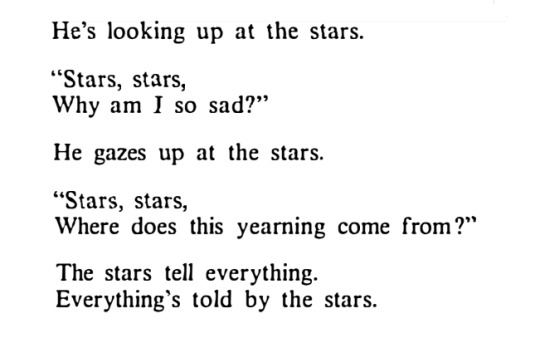

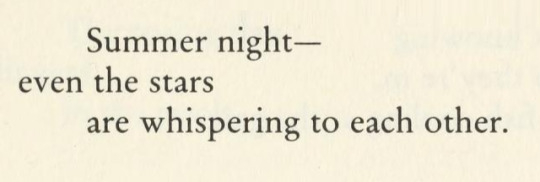



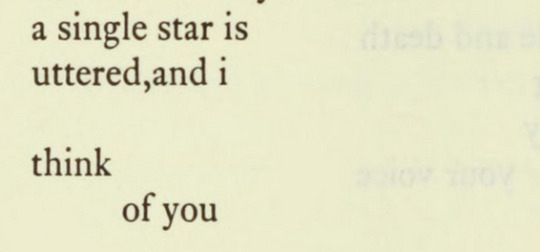

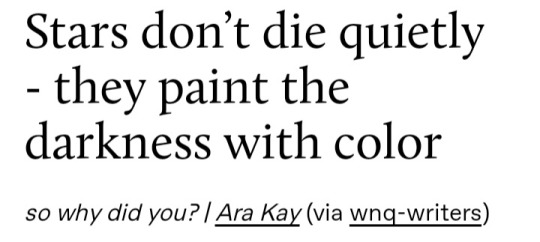

Alexander Blok, from “Night, The City Has Simmered Down,” wr. c. 1906//Franceso Levy//Kobayashi Issa, from The Essential Haiku: Versions of Bashō, Buson & Issa (ed. and trans. Robert Hass)//(image: Galileo Galilei, Sidereus nuncius, facsimile of the 1610 edition)// Stephen Hawking, A Brief History of Time //François-Léon Bénouville (1821-1859)// e.e. cummings, “in the rain” (from Tulips), Complete Poems: 1904-196// ring by zoe & morgan// Ara Kay
286 notes
·
View notes
Photo

From: Galileo Galilei, Sidereus nuncius. Magna, longeque admirabilia spectacula pandens, suspiciendaque proponens unicuique, praesertim vero philosophis, atque astronomis, apud Thomam Baglionum, Venetiis, 1610 [Bibliothèque nationale de France, Paris. Museo Galileo – Istituto e Museo di Storia della Scienza, Firenze]
#astronomy#illustration#book#galileo galilei#tommaso baglioni#bibliothèque nationale de france#museo galileo#1610s
71 notes
·
View notes
Text
1932: A hercegprímás megáldja a magyar gépjárműveket a Vajdahunyad vár udvarán
1937: Angelo Rotta pápai nuncius megáldotta a dunai csónakokat
1944: Megáldották a Magyar Szentföldön az új lourdesi kápolnát
1943: Csoportos kerékpáráldás a Hősök terén
8 notes
·
View notes
Text

Galileo Galilei, Sidereus nuncius, Tommaso Baglioni, Venezia, 1610
4 notes
·
View notes
Text
hey woah hold on

(image from: Galileo Galilei, (1610), Sidereus nuncius, Zacharias, Palthenius, Francfort, 1611) (x)
okay but do you see. this part

ok


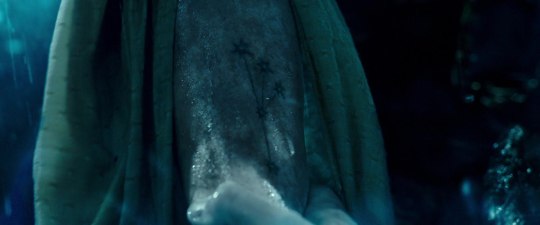
#i will not lie to you i did not think the constellation had any grounding and was completely ok with this#i knew the book vaguely handwaved something about orion but#i dunno it just didn't matter that much to me to look it up it's not the point#curiously i will say i don't think this has anything to do with the our-world carina#and if carina is their-world polaris i don't think it's related to that either#which then implies he tattoo'd what the cover of the journal was as a reminder because. he left the journal with her#and frankly! that's so soft and sad!
1 note
·
View note
Text
Who was the first person to produce a drawing of the moon from telescopic observations?

The first drawing of the Moon from telescopic observations was produced by Thomas Harriot (1560-1621). The mathematician and astronomer who founded the English school of algebra noticed the various contours and shapes on the Moon and produced the first lunar map based on these. The shaded lunar plains on the map are now referred to as seas.
Whilst Harriot was celebrated for his achievement, it was the Italian astronomer Galileo Galilei (1564-1642) who received the most praise for his telescopic observations of the Moon. Galileo interpreted the shadows on the Moon as craters and mountains, claiming that the Moon had a similar landscape to Earth. This led Galileo to make the groundbreaking announcement that the universe was not Earth-centred. Through his observations of the Moon, planets, and stars, Galileo published Sidereus Nuncius containing his theory that the planets revolved around the Sun and not around the Earth as previously believed. Despite these findings, it took the population of the world a while to accept his ideas. The Catholic Church condemned Galileo for “vehement suspicion of heresy”.
The earliest telescopes of the kind used by Harriot and Galileo had a narrow field of view, meaning that only a small portion of the moon could be seen at any one time. Therefore, Harriot's maps are not as accurate as those produced in the 21st century.
1 note
·
View note
Text
————
In the book Object-Oriented Ontology by Graham Harman, alongside his explaniation to the core of that phylosophy, openly thesing and mocking the String theory, which assupt as best game in town.
A candide for to be theory of everything, but still lack of so many things, like the exaptence the forces of sensual objects.
Nearly the entire planet spent its days in the tedium of thinking itself a part of a mere menagerie, bound to live within the perfect celestial omens drawn out for them by the godfathers, in a monotheistic universe, until Galileo made statements that confused everyone's minds.
We are still searching for that theory of everything. Searching for the mystery of connection, from the day we arrived, through ancient mythologies to today's daily horoscopes.
Brief look at our vision on universal logic, historic of the space, four false assuption of the super-string theory from (OOO) ;
(revised, for orginal pdf)
In recent decades, few intellectual topics have captured the public imagination like the search for a so-called ‘theory of everything’ in physics.
Brian Greene of Columbia University, who views the currently popular ‘string theory’ as the best existing candidate for a theory explaining the composition of matter and the structure of the cosmos.
The search for unifications in physics has already given humanity some of its most heroic moments.
In the early 1600s, Galileo established the falsity of the ancient view that there is one kind of physics for the eternal bodies in the sky and a completely different kind for the corrupt and decaying things down here on the earth; instead, he showed that one physics governs every portion of the universe.
One of the first and most illustrious examples of the prophetic power of science is reported by Galileo Galilei in his Sidereus Nuncius:
I feel sure that the surface of the Moon is not perfectly smooth, free from inequalities and exactly spherical, as a large school of philosophers considers with regard to the Moon and the other heavenly bodies, but that, on the contrary, it is full of inequalities, uneven, full of hollows and protuberances, just like the surface of the earth itself, which is varied everywhere by lofty mountains and deep valleys.4
At the time this was written, the dominant Aristotelian doctrine taught that the cosmos, along with all the elements that composed it, was perfectly spherical, and that no imperfection was allowed to exist outside of the earth.
Gazing through his telescope, Galileo was struck by a blasphemous revelation: that the moon, and by extension the entire universe, was irremediably dirty and subject to the same processes of degradation and dissolution that we experience in our world.
The apparently innocuous words of his statement, supported by the reasonable argument of scientific observation, hide an actual, gruesome deicide; if the universe is not perfect and eternal, how could God be?
As we now know, the moon’s surface was disfigured by asteroids—celestial omens of death whose distorted, eccentric trajectories escape the comprehension of spherical cosmology.
Interestingly, Galileo somehow expiated his blasphemy by opening the way to the formulation of the principle of the conservation of energy—the first principle of thermodynamics—through his experiments on motion.
The spherical nature of the universe was somehow preserved in the symmetry of the laws of mechanical motion, which imply the total reversibility of all dynamic processes and thus the nonexistence of time as a material drive toward degradation.
This paved the way for the even more fateful unification announced in Sir Isaac Newton’s Principia in 1687. In this masterpiece of the history of science, Newton demonstrated that the movement of celestial bodies and the falling of objects to the ground are governed by one and the same force: gravity, as everyone calls it today.
In the 1860s, James Clerk Maxwell was unify the previously separate forces of electricity and magnetism, and established further that light and electromagnetism travel at the same speed, strongly suggesting that light is simply another manifestation of the same force.
From this consideration it obviously follows that the ultimate prophecy of doom channelled by science is the second principle of thermodynamics in its statistical-mechanical interpretation, as understood by Ludwig Boltzmann:
After this confession you will take it with more tolerance if I am so bold as to claim your attention for a quite trifling and narrowly circumscribed question.
[...] The second law proclaims a steady degradation of energy until all tensions that might still perform work and all visible motions in the universe would have to cease. All attempts at saving the universe from this thermal death have been unsuccessful, and to avoid raising hopes I cannot fulfil, let me say at once that I too shall here refrain from making such attempts. (5)
The ‘narrowly circumscribed question’ of condemning the entire cosmos to irremediable heat death breaks with any surviving hope that the universe may be, in any capacity, spherical, reversible, or eternal.
Boltzmann was a meticulous scientist and a convinced upholder of the inherent boundaries of science and human knowledge; but despite his understandable caution in approaching the subject of his own ground-breaking discoveries, the proof of his H-theorem, containing a probabilistic argument in support of the second principle of thermodynamics, is not merely a speculation on the behaviour of an ideal gas of non-interacting particles, but rather the elaborate conjuration of an eldritch aberration.
As we diligently follow the intricate steps of this twisted ritual, summoning functions and variables and transmuting them through the arcane operations of calculus, we finally reach the Quod Erat Demonstrandum, manifesting the apocalyptic truth of the death of the universe and unleashing it into reality. There is minimal need of scientific understanding to operate the conjuring machine of thermodynamics; it just works—until it works no more.
-
By the 1970s four forces of nature had been recognized: gravity, electromagnetism, the strong nuclear force (which holds atoms together) and the weak nuclear force (which governs radioactive decay).
The 1979 Nobel Prize in Physics went jointly to the physicists Sheldon Lee Glashow, Abdus Salam and Steven Weinberg for their unified theory of the ‘electroweak’ force, while the strong force was accounted for at roughly the same time by QCD, or quantum chromodynamics.
By the mid-1970s, physics had its Standard Model of Particle Physics, which was more or less completed in 2012 by the apparent discovery of the Higgs boson at CERN in Geneva.
In the early twentieth century, quantum theory unified various phenomena of heat, light and atomic motion by explaining them as occurring through discrete jumps rather than continuous increase or decrease.
Among the remaining problems with the Standard Model is that it does not unify gravity with the electromagnetic, strong and weak forces. The pursuit of a workable theory of ‘quantum gravity’ continues to this day, and along with the discovery by astronomers of the still inexplicable dark matter and dark energy, the search for quantum gravity is one of the most likely triggers of the next revolution in physics.
***
After Graham wrote those,
little note about the discovery of black star.
NEMESIS or THE BLACK SUN
Because You love cremation grounds
I have made my heart one
so that You
Black Goddess of the Burning Grounds can always dance there.
No desires are left, Mā, on the pyre
for the fire burns in my heart,
and I have covered everything with its ash to prepare for Your coming.
via: R.F. McDermott, Singing to the Goddess: Poems to Kālī and Umā from Bengal (Oxford: Oxford University Press, 2001), 74–75.
***
Nonetheless, no matter how carefully science insists on tracing the limits of its own understanding, barricading itself behind walls of axioms and boundary conditions, it inevitably becomes an oracle, a spiritual medium, opening a laceration onto a radical Outside and summoning an invasion of voices of long-lost demons into our world, not unlike a cursed Cassandra who refuses to surrender to her own prophetic utterances.
The topic of unified theories is so exciting that physicists have created a small industry of readable popular books on the theme, with Greene’s The Elegant Universe one of the most prominent among them.
Maybe we shoulld agree on Graham’s phases:
I certainly agree with Greene that ‘we should not rest until we have a theory whose range of applicability is limitless’. My point of disagreement will sound surprising in the current intellectual climate: I do not agree that physics, or even natural science more generally, is the right place to find such a unified theory. In my view, the ‘theory whose range of applicability is limitless’ can only be found in philosophy, and especially in the type of philosophy called Object-Oriented Ontology (OOO).
Though the rapid advance of modern physics has been one of the most reassuring chapters of human history, I see it as a field that excludes far too much to give us a theory of everything.
Assumptions that graham found wrong in String Theory.
Claim that physics (and string theory in particular) has limitless applicability.
String theory is not the only candidate for a ‘theory of everything’, but it remains the most popular, and for many the most promising.
The theory has been around in some form since the 1960s, but became an especially hot topic two decades later.
String theory postulates that matter is composed of vibrating one-dimensional strings twisting through ten dimensions, rather than the four dimensions of space–time that Einsteinian physics accepts. In so-called ‘ M-theory’, Edward Witten’s 1995 modification of the string landscape, the total number of dimensions was expanded to eleven.
Numerous beautiful mathematical and physical results can be derived from the theory, including a possible account of the everelusive quantum gravity, meaning a theory of gravity that can be explained in terms of quantum mechanics just as the electromagnetic, strong and weak forces already have been.
Nonetheless, a backlash against string theory began in the twenty-first century, as can be seen in the widely read critical books by physicists Lee Smolin and Richard Woit.
Perhaps the most frequent accusation against string theory by sceptics is that it cannot be experimentally tested, and is therefore said to be little more than a mathematical exercise of no direct relevance to physics.
Another problem is that so many thousands of different string theories are mathematically possible that there is no reason to choose one in particular, except on the shaky basis that we must obviously choose the theory that fits the structure of the universe we know: for otherwise we would not be here today to have debates about it.
This line of reasoning is known as the ‘anthropic principle’, viewed by many scientists with contempt but by others as a pivotal intellectual tool. Lastly, Smolin in particular is alarmed by the near-monopoly of string theory in the leading graduate courses in physics, which for him means that the entire profession has put all its eggs in a single, experimentally baseless basket.
String theory would have become textbook science, learned by students everywhere as a basic fact about our world, much like Einstein’s theory of gravity or the periodic table of chemical elements. My claim is that even under this optimal scenario of maximum scientific triumph, string theory would still not be a ‘theory of everything’. To see why, let’s examine what I take to be the four false assumptions behind statements that string theory’s range of applicability is limitless.
First False Assumption: everything that exists must be physical.
A successful string theory would sum up everything we know about the structure and behaviour of physical matter. But this makes it a ‘theory of everything’ only on the condi- tion that everything is physical.
Of course, many people do not see it this way.
Religion is a far weaker force in Europe than it used to be, though it remains significantly stronger in the United States, and very much stronger in other parts of the world. Among adherents of all religions, belief in immaterial gods and souls is nearly universal. Many other people around the world, including a number of unreligious ones, still believe in ghosts and spirits. In almost every country, a number of buildings stand out for their reputation as being especially haunted.
In more refined circles we find Jungian psychology, which affirms the existence of unconscious and immaterial archetypes shared collectively by all human beings.
By hypothesis, a mainstream physicist will dismiss all such ideas as unscientific rubbish; A ‘theory of everything’, does not mean a theory that includes all of the nonsense that gullible people think is real, but only a theory of what rational and scientifically minded people know to be real: the physical–material universe. (?)
Though I for one am not particularly convinced by Jungian psychology, I do read Jung from time to time and find that he improves my imagination.
And I would certainly hate to live in a world where Jungian societies were liquidated by the Rationality Police or demoralized by general public mockery.
But let’s suppose we agree with the scepticism of anti-spirutual stories, and join the crowd that disbelief about any gods, souls, ghosts, spirits, unconscious archetypes or other supposed non-material entities. Even if we were to walk this far down in that the path, and even under the supposition that string theory were confirmed by rock-solid evidence,
I would still not agree with her that this meritorious theory could count as a ‘theory of everything’. For we can think of plenty of things that are not physical but which are almost certainly real.
For one thing, material objects always exist somewhere, but in the case of the VOC it is not at all clear where that place of existence would be.
The Dutch East India Company (VOC) challenges the notion of being a material object, as material objects have a specific location, which the VOC lacked. The VOC wasn't confined to its Amsterdam headquarters, as its operations were primarily in Southeast Asia, governed independently by a Governor-General without needing to consult Dutch shareholders. Also, its Asian capital, Batavia (now Jakarta), housed only a fraction of its resources and employees. The VOC's regulations applied across its territories, further complicating its physical location. Moreover, the VOC existed from 1602 to 1795, outliving any individual or ship associated with it, thus defying the characteristics of a material thing like a quark, electron, or vibrating string.
There is an old philosophical paradox known as the Ship of Theseus, which poses the problem of whether the ship remains the same even when we gradually or suddenly replace each of its boards with a new one – especially if we assemble the old boards together nearby as a rival vessel to the new ship. Without going further into this paradox I wish to emphasize what I take to be a chief lesson of the VOC case study:
the irreducibility of larger objects to the sum total of their material compo- nents. The Dutch East India Company was not just a collec- tion of atoms and strings at various locations in space–time, but to a large extent was able to survive the motion and dis- appearance of these tiny elements while making use of others.
Second False Assumption: everything that exists must be basic and simple.
Are we missing the point ? we have missed the point.
For while it may be true that the VOC or the Ship of Theseus can survive despite the turnover of their material pieces, they certainly cannot exist without any material pieces at all. If over time the VOC only lost atoms and never gained any, there would finally come a point where its various ships, cargoes and officers would crumble to dust and the VOC would cease to exist.
Maybe theory never meant to tell us there cannot be higher-order objects that seem to endure despite massive turnover in their material components. But such objects must always be made of some physical matter, even if it is relatively unimportant whether one hydrogen atom or another happens to be found in the brain of the VOC’s Governor-General.
The fallacy that the philosopher Sam Coleman has termed ‘smallism’, as if the real ele- ments in any situation were the tiniest components to which everything can be broken down.5 The mid-and large-sized objects that surround us (from cups, tables and flowers to skyscrapers and elephants) seem to have independent fea- tures of their own, but according to thheory these larger objects ultimately receive all of their properties from those of their components; after all, without these small components the larger objects could never exist.
What this argument misses is the phenomenon known as emergence, in which new properties appear when smaller objects are joined together into a new one.6 This is visible everywhere in human life. For example, a high-school friend and I noticed one summer that girls would often walk together in groups of three, but that boys were almost always found alone or in pairs. We wondered why this was so, until my friend rather cryptically nailed it by saying that ‘three boys together are already a gang’. I believe his meaning was as follows: there is something vaguely menacing in the air as soon as three young males come together, and hence this practice is subtly discouraged under normal situations, which do not provide a welcome setting for menace. If the observation is correct, then three boys together have as a vague emergent property ‘gang-like threat to society’ that is found neither in two boys nor in three girls.
This is also true in the sciences, as can be seen with especial ease in a field such as organic chemistry: all organic compounds contain carbon, but there are millions of organic compounds, each with its own unique features.
Sometimes the defenders of emergence push their luck and make unnecessary additional claims, asserting for instance that the features of organic compounds ‘could not have been predicted’ from the features of carbon.
But quantum chemistry does allow us to predict the properties of larger molecules before they are actually created. And predictability is not even the point, since even if we could predict the features of all larger entities from their ultimate physical constituents, the ability to predict would not change the fact that the larger entity actually possesses emergent qualities not found in its components.
This is equally clear in human life. Perhaps a couple is about to be married, and all of their friends see clearly in advance that the marriage will be disas- trous. Now, let’s imagine that the friends of the couple are completely right: not only does the marriage fail, but it fails in precisely those ways and on the exact timetable that the friends had predicted. But notice that the predictability of this marital failure does not entail that the marriage is nothing more than the sum total of the two pre-existing indi- viduals who were married. In other words, the emergent real- ity of an object composed jointly of multiple parts (such as a married couple) does not hinge on the predictability or unpredictability of how it ultimately turns out. Emergence does not require mysterious results, but only that the mar- ried couple has joint features not found in either of the indi- viduals in isolation. The same would hold true if the friends were completely wrong and the marriage led to eternal and blissful harmony: the point is that the existence of the mar- riage as an emergent object over and above the two individ- ual partners has nothing to do with whether its success or failure could be foreseen.
Another prejudice infects portions of the history of phil- osophy in the view that only that which is natural truly exists. This doctrine is especially prominent in the philoso- phy of the German polymath G. W. Leibniz (1646–1716), who distinguishes sharply between what he calls ‘substances’ and ‘aggregates’. Substances are simple, soul-like entities (known as ‘monads’), all of them created by God at the beginning of time.7 By contrast, aggregates are compounds such as machines, circles of men holding hands, or pairs of diamonds glued together. For Leibniz such aggregates are merely laugh- able stand-ins for true substances, which can exist only by nature rather than artifice. OOO rejects this view given that machines, much like the Dutch East India Company (another example mocked by Leibniz), can be treated as unified objects no less than an atom or tiny vibrating string. In short, naturalness is no better as a criterion of objecthood than smallness or simplicity. As for the true criteria for what qualifies as an object, we will discuss them at the end of this chapter.
Third False Assumption:
everything that exists must be real.
One of the greatest fictional heroes of all time is surely the detective Sherlock Holmes, in the stories of Sir Arthur Conan Doyle. In writing these stories, Doyle tried to house his detective at a fictitious address on a real London street: namely, 221B Baker Street. Yet the very real London thoroughfare called Baker Street was later extended to go as far as the 200s, thereby putting the fictional flat of Holmes and Dr. Watson within the range of real-life city addresses. It is said that some of the Sherlock Holmes fans who visit the currently accepted address, now home to a gift shop and museum, labour under the misconception that the detective was a real historical person.
The retelling of this story usually provokes cruel laughter at the expense of these naive tourists. Yet there is a charming grain of truth in their ignorance: the fact that the detective is such a beloved and memorable character that one can easily imagine him resting comfortably at home on Baker Street, and picture him in a number of situations that did not actually occur in Doyle’s works (as in the current television series in which Holmes, played by Benedict Cumberbatch, solves cases in present-day London).
This brings us to a third objection to the global ambitions of string theory. Namely, a successful string theory would not be able to tell us anything about Sherlock Holmes, and this alone suffices to disqualify it as a ‘theory of everything’. For Holmes is a fictional personage, and thus was never composed of strings or of any other physical material.
Nor is it even necessary to invoke celebrity fictional characters such as those who inhabit novels and films, since we are surrounded at all times by fictions.
For example, any real orange or lemon, as I perceive it, is a vast oversimplification of the real citrus-objects in the world that are submitted to rough translation by the human senses and human brain.
The real orange or lemon is no more accessible to my human perception than it is to a mosquito or dog, whose organs translate the fruits differently into their own types of experience. In this respect, all of the objects we experience are merely fictions: simplified models of the far more complex objects that continue to exist when I turn my head away from them, not to mention when I sleep or die.
A successful string theory, like any fundamental theory of physics, is aimed entirely at the discovery of real physical entities rather than fictitious ones. And while it is already hard to imagine a basic physical theory adequately addressing any emergent mid- or large-sized entity (let us use ‘entity’ as another synonym for ‘object’ and ‘thing’), it is even harder to imagine a successful string theory teaching us anything about the fictional objects of literature and everyday perception, a field where natural science normally does not tread.
This is no small matter, since fictions are an integral part of human experience, and of animal life more generally.
Along with the examples already given, recall that we humans spend much of our time worrying about things that can never happen or simply never do. We are frequently deluded about our own capacities, whether under, or overestimating them.
We spend a large portion of our lives in nocturnal dreams, and despite recent criticism of psychoanalysis, it is doubtful that these dreams can be understood in purely chemical or neurological terms.
All of this is to say nothing of our entertainment media, which often feature dragons, rings of invisibility, aliens assaulting the earth, or the intimate lives of characters who exist for two hours on a screen before vanishing from the cosmos forever.
For many of us, artists such as Beethoven and Picasso are as worthy of esteem as Newton and Einstein, though the latter discuss such undeniable realities as light and moons while the former create pure fictions.
Any ‘theory of everything’ that dismisses the reality of fictions, or passes them over in silence, is by that fact alone unable to reach its goal of covering everything.
Fourth False Assumption:
everything that exists must be able to be stated accurately in literal propositional language.
Here are some scientific statements, chosen at random from the three books of science nearest to hand in my living room:
1. ‘Some hydrogen atoms can escape the Earth’s gravity and are lost to space, [while] some meteoritic material comes in (about forty-four tons per day on average) . . .’ (8)
2. ‘As Schrödinger pointed out, if M represents a cat and R takes two possible values . . . and the decay event triggers a device that kills the cat, then the cat will be neither alive nor dead after the measurement interaction, according to the orthodox interpretation.’9
3. ‘All other interventions, such as, for example, cold, heat, acids, alkalis, electrical currents, [the bell] responds to as any other piece of metal would. But we know . . . that
a muscle behaves in a completely different way. It responds to all external interventions in the same way: by contracting.’10
These are admirably formed statements conveying information that we hope to be true, though every scientist knows that many apparently rock-solid statements are later aban- doned or modified in the face of new evidence. Moreover, it is not just science that makes such statements.
History does the same. I need only turn elsewhere on my living room bookshelf:
‘But Mo-ch’o was growing old, and the Turks began to weary of his cruelty and tyranny. Many chiefs offered their allegiance to China, and the Bayirku of the upper Kerulen revolted.’11
Or simply this: ‘At this time, too, Venice had become the intellectual centre of Italy.’ (12)
All of these statements can be understood clearly by anyone with a basic secondary education. And of course we make statements of this sort constantly even in non-scholarly contexts.
It is easy to state as follows:
‘Leicester City stunned the sports world in 2016 by finishing on top of the English Premier League.’ Or I can look at the text messages on my phone and see that my wife, a university food scientist, needs me to pick up some items for her class on sensory analysis: ‘Here are the items I need before 11 o’clock. 1 pack of original Oreo cookies. 2 litres of drinking water. 1 carton of Florida Natural Original Orange Juice, with pulp.’
All these examples are literal statements that convey information directly. And thus it is easy to assume that nothing can be real unless we are able to refer to it in an accurate prose statement that conveys literal properties of the thing in question.
Apparently, the only alternative would be fuzzy metaphors or merely negative statements that teach us nothing.
The American philosopher Daniel Dennett is very much a literalist in this sense.
I am both amused and appalled by his mockery of wine-tasting in the following passage:
Could Gallo Brothers replace their human wine-tasters with a machine? . . . Pour the sample in the funnel and, in a few minutes or hours, the system would type out a chemical assay, along with commentary: ‘a flamboyant and velvety Pinot, though lacking in stamina’ – or words to such effect . . . [B]ut surely [note Dennett’s sarcasm] no matter how ‘sensitive’ or ‘discriminating’ such a system becomes, it will never have, and enjoy, what we do when we taste a wine: the qualia of conscious experience . . . If you share that intuition, you believe that there are qualia in the sense that I am targeting for demolition. (13)
To summarize, Dennett thinks that the wine is literally and adequately expressed by its ‘chemical assay’, though his imagined machine will also add sarcastic poetic commentary at the expense of human readers who disagree with his views. Nonetheless, he holds, there is no special conscious human experience of wine that would require the elusive figurative description of a flamboyant and velvety Pinot.
OOO holds that Dennett is wrong about this, and not just in the obvious sense that the taste of wine for humans resists any precise literal description. Instead, the claim of OOO is that literal language is always an oversimplification, since it describes things in terms of definite literal properties even though objects are never just bundles of literal properties (despite Hume’s view to the contrary).
It is not just that the chemical assay of the wine fails to do justice to the human experience of tasting wine, but that it fails to do justice even to the chemical–physical structure of the wine. This may sound like a startling claim, since the natural sciences are generally regarded as the court of final appeal in our era, just as the Church was in the medieval period.
But I will develop this anti-literalist claim throughout the present book. In so doing, I will build on the philosophical work of Heidegger, who also gives priority to poetic over literal language – though admit- tedly in ways that sometimes verge on Black Forest peasant kitsch, and though his statements against science are often needlessly extreme. 14
Thus I will make the case differently from how Heidegger did, though I agree with his basic line of reasoning: the reality of things is always withdrawn or veiled rather than directly accessible, and therefore any attempt to grasp that reality by direct and literal language will inevitably misfire.
In a sense, this point by Heidegger merely develops Aristotle’s ancient claim in his Metaphysics that individual things cannot be defined, since things are always concrete while definitions are made of universals. (15)
0 notes
Text
January 7th: Galileo and the Moons of Jupiter
Galileo Galilei first observed the moons of Jupiter on January 7th, 1610. Originally believing them to be three stars near Jupiter, he continued to observe them for the following week. The first night it showed the stars had moved the wrong way. On the 13th, a fourth one appeared. After a few more weeks, it was observed that the stars never left the vicinity of Jupiter and appeared to be carried along with the planet, changing their position with respect to each other and Jupiter. He then determined that the bodies were not stars, but were actually moons, similar to our own moon that he had been previously studying.
He continued on to publish his observations in Sidereus Nuncius in March 1610. “I should disclose and publish to the world the occasion of discovering and observing four Planets, never seen from the beginning of the world up to our own times, their positions, and the observations made during the last tow months about their movements and their changes of magnitude” he wrote.
Galileo originally called Jupiter’s moons the “Medicean planets” after the Medici family, as he wished to gain favor with the family so he could leave his professorship in Padua for a position at the court in Florence.
Galileo was a Copernican, meaning he supported the astronomical theories of Nicolaus Copernicus, who created the heliocentric model with the sun at the center of the solar system around 1543. He at first was rather timid about this fact, but after his discovery about the moons of Jupiter, he posed that the moons would be a good example to support the at the time theory.
The discoveries did not prove the Copernican cosmology, but “they provided a psychological framework for thinking about the cosmos in new terms.” With his discoveries and flattery of calling the Jovian moons the “Medicean planets,” it did indeed land him the coveted post at the court.
Sources:
Baalke, Ron. “Discovery of the Galilean Satellites.” www2.jpl.nasa.gov. Accessed January 7, 2024. https://www2.jpl.nasa.gov/galileo/ganymede/discovery.html#:~:text=Galileo%20first%20observed%20the%20moons.
Cox, Lauren. “Who Invented the Telescope?” Space.com, December 21, 2017. https://www.space.com/21950-who-invented-the-telescope.html.
GINGERICH, OWEN. “Galileo, the Impact of the Telescope, and the Birth of Modern Astronomy.” Proceedings of the American Philosophical Society 155, no. 2 (2011): 134–41. http://www.jstor.org/stable/23056830.
0 notes
Text
Ricercatrice veronese svela i misteri dell'Astrolabio
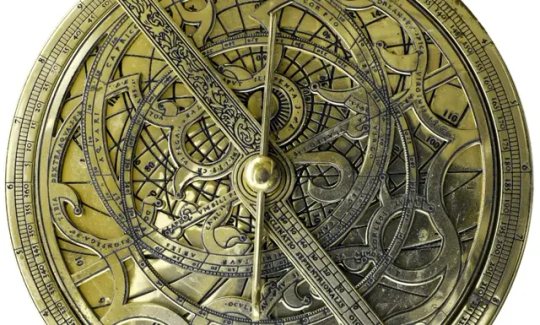
L'astrolabio di Verona svela un antico dialogo scientifico tra i popoli del Mediterraneo. Le incisioni scoperte sull'astrolabio, provano uno scambio di informazioni tra ebrei, arabi e cristiani che favorì i progressi nella scienza nel corso del Medioevo.
Nell'immaginario collettivo, il Medioevo è visto come un'epoca di intolleranza e conflitti religiosi, ma l'archeologia ci racconta una storia diversa, almeno in parte. L'ultima testimonianza in tal senso è arrivata da un astrolabio islamico conservato dalla Fondazione Museo Miniscalchi-Erizzo di Verona, la cui analisi ha svelato l'esistenza di un proficuo scambio di conoscenze scientifiche tra ebrei, musulmani e cristiani durato molti secoli.
Esame Dettagliato
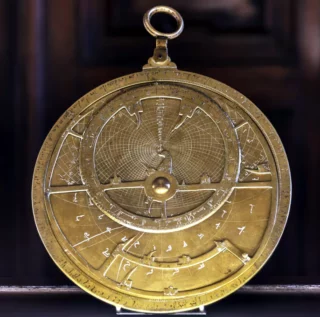
L'astrolabio islamico conservato al museo Miniscalchi-Erizzo di Verona. Francesco Sorbini / Fondazione Museo Miniscalchi-Erizzo
Noto come "astrolabio di Verona", l'oggetto in questione risale all'XI secolo ed è uno dei più antichi del suo genere. Già da diversi anni (a partire dal 2020) era stato studiato da parte del personale del Museo, ma non si era arrivati a uno studio completo su di esso.
Fino a oggi, quando Federica Gigante, ricercatrice del Christ's College di Cambridge, ne ha svelato i segreti conducendo uno studio pubblicato sulla rivista Nuncius.
Incuriosita da un'immagine caricata sulla pagina web del museo, la storica ha avviato un esame approfondito del manufatto, analizzandone ogni singolo aspetto e partendo dalla forma e dalle iscrizioni.
Alcuni indizi hanno rivelato che l'astrolabio fu forgiato nella Spagna musulmana, molto probabilmente nella regione di Toledo, nota all'epoca per una folta presenza di ebrei e cristiani accanto alla popolazione islamica.
Smartphone Ante-Litteram
Ideati già nell'antichità, gli astrolabi sono dei complessi strumenti meccanici costruiti per determinare la posizione delle stelle nel cielo misurando l'altitudine di un corpo celeste sopra l'orizzonte.
Prima della comparsa del sestante, nato proprio per questo scopo, essi svolgevano una molteplicità di funzioni, un po' come fanno oggi i moderni smartphone: oltre a essere usati per studi astronomici e astrologici, erano utili anche per la navigazione terrestre, nonché per tenere traccia delle stagioni, delle maree e dell'ora del giorno.
Per gli islamici, quest'ultima funzione aveva anche una valenza religiosa, aiutando i fedeli a "monitorare" i tempi di preghiera quotidiana e accertando che essa fosse diretta verso la Mecca.
Di mano in mano
Ciò che rende unico il reperto sono proprio le iscrizioni: esaminandole da vicino, si è infatti notato che dietro i caratteri arabi erano presenti anche delle incisioni in lingua ebraica, circostanza che sottolinea come l'oggetto sia circolato tra le comunità giudaiche trasferitesi dopo la diaspora in Italia, dove l'arabo non era compreso.
Non bastasse, sono state rilevate ulteriori traduzioni e correzioni sia in ebraico sia in una lingua europea occidentale. Nel corso del tempo, il manufatto subì insomma numerose modifiche, aggiunte e adattamenti via via che passava di mano e almeno tre suoi distinti proprietari sentirono l'esigenza di porvi delle modifiche, arricchendone i dettagli.
A detta della ricercatrice, queste peculiarità indicano un continuo dialogo tra le tre principali culture mediterranee, che favorì i progressi nella scienza nel corso del Medioevo.
Read the full article
0 notes
Text
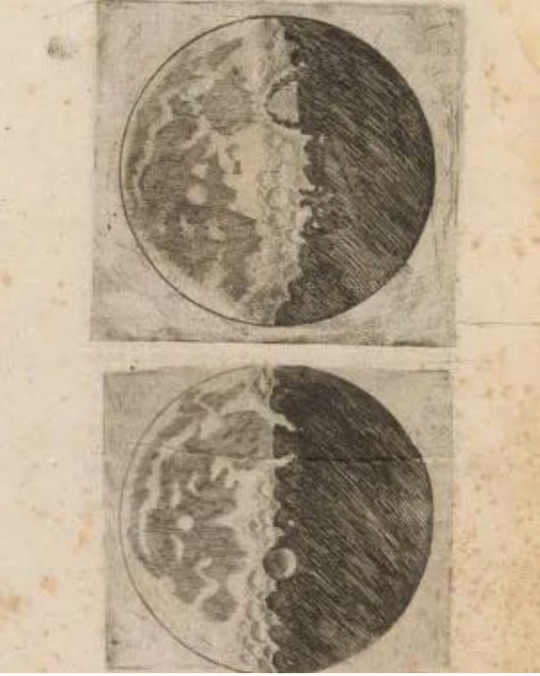
Galileo sketched the Moon as seen through his Telescope in 1609 AD; from Sidereus Nuncius (Starry Messenger), published in March in 1610 AD
0 notes